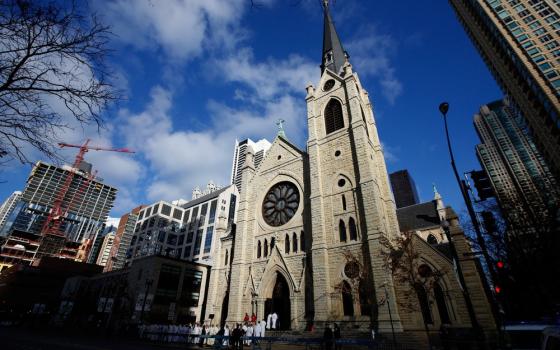SAVING PARADISE: HOW CHRISTIANITY TRADED LOVE OF THIS WORLD FOR CRUCIFIXION AND EMPIRE
By Rita Nakashima Brock and Rebecca Ann Parker
Published by Beacon Press, $34.95
Saving Paradise offers much more than readers might expect from its title. The subtitle, How Christianity Traded Love of This World for Crucifixion and Empire, is intriguing. In the prologue, authors Rita Nakashima Brock and Rebecca Ann Parker say their latest work is based on a five-year search to discover why images of the crucified Jesus did not appear in churches until the 10th century.
The two scholars of religion describe their travels to churches in Rome and Ravenna, Italy; Istanbul, Turkey; and Cologne, Germany, where they came upon the oldest crucifix to survive until today, one that was created about 965 and is found in the Cathedral of St. Peter and Maria. They draw upon their own observations and the work of other scholars to show how the Christian concept of paradise has shifted from a this-worldly to an otherworldly emphasis over the first two millennia of the faith.
Nakashima Brock and Parker cite the dome of the Mausoleum of Galla Placidia in Ravenna, built in the fifth century, as depicting paradise with both a “here” and “not-here” quality, typical of how the early church understood paradise as encompassing both material and spiritual dimensions, both awaited and fulfilled. Early Christian leaders taught that humans gained the same powers of divinity as Christ through baptism, a concept known as theosis, based on such scripture passages as 2 Peter 1:4.
According to the authors, this optimistic, life-affirming emphasis of the faith started to change in the Western church during Charlemagne’s attempts to subdue the Saxons in the eighth century. The cross became a sign of terror, and Christian artists began to depict the tortured body of Christ. The Eucharist changed from a beautiful feast of life to a repetition of Jesus’ bloody sacrifice.
St. Catherine of Siena is one of the examples Nakashima Brock and Parker cite to document the paradoxical theology that developed. In attempting to persuade Pope Gregory XI to launch another crusade in 1370, Catherine wrote, “Make peace, and turn the whole war against the unbelievers. ... We shall be freed -- we from war and the divisions and many sins, and the unbelievers from their unbelief.” While Catherine and other mystics extolled peace and expressed compassion for the sufferings of Christ, they also called for wielding the sword for Christ and killing evildoers.
As an antidote to this sanctifying of violence, Nakashima Brock and Parker turn to the social gospel movement of the 20th century, as exemplified by such figures as Walter Rauschenbusch and Martin Luther King Jr. They cite its focus on paradise as an earthly reality rather than a future goal and its view of sin not as an individual’s rebellion against God but as a force that disrupts love and justice in human affairs.
Saving Paradise offers eye-opening explorations of the mixture of spiritual vision and myopia that marked many of the great figures of Western Christianity. Its rich text and the additional material in its notes should spur readers to examine both the darkness and the light that can be found in all of us.
Darrell Turner writes the annual religion section for the Encylopedia Britannica.
National Catholic Reporter January 9, 2009



